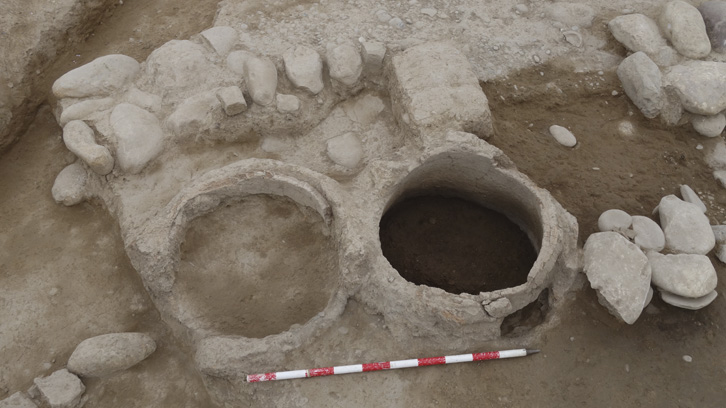New light shed on mankind's first hydrocarbon market

New findings by a UAB team at the archaeological site of Tell Lashkir, in northeastern Iraq, demonstrate that, some 5,000 years ago, their Bronze Age inhabitants were deeply involved in supplying bitumen to the bustling cities in the south through Mesopotamian trade networks. The study has successfully applied a combination of several geochemical parameters and Bayesian models to obtain these new results.
Coinciding with the invention of writing, the development of the first states and, ultimately, the origin of civilization, the inhabitants of southern Mesopotamia (Sumerians, Akkadians and Babylonians among others) found in the oil that naturally seeped out of the soil an optimal natural resource to waterproof the boats that supported trade across the Tigris and Euphrates and helped in the building of humanity's oldest cities. During the Bronze Age, bitumen became a cause for diplomatic disputes by monarchs such as Hammurabi and motivated expeditions upriver to appropriate the necessary quantities of crude oil to meet urban demands.
Thanks to geochemical studies, it is known that the first cities were supplied by two different sources, both in the north: Hit, in the middle course of the Euphrates (present-day Abu Jir, Iraq) and Madga, in the middle-upper course of the Tigris (now Kirkuk, Iraq). But who were the inhabitants of the northern territories that supplied the first cities in the south? Were they enriched by the export of their natural resources? How were they affected by the conquests of the Akkadian Emprie, the first in recorded history? Did they manage to maintain control over their resources? Hitherto, the scarcity of archaeological research in the region has denied us clear answers.
Since 2015, archaeologists from the Middle East and Mediterranean Archaeology Research Group (GRAMPO) at the department of Prehistory from the Universitat Autònoma de Barcelona in collaboration with the Salahaddin University of Erbil have been excavating the site of Tell Lahskir, located in the north-east of Iraq, precisely in the ancient region of Madga. The seven excavation seasons performed by the team led to the discovery of a large amount of bitumen remains impregnatic ceramic vessels from the beginning of the Bronze Age. This offered a unique opportunity to carry out geochemical studies that fill this key gap in research.
The identification of compounds such as steranes, hopanes and asphaltenes in the Laboratory of Stable Isotopes Analysis (LAIE) of the Institute of Environmental Science and Technology at UAB (ICTA-UAB), combined with the use of Bayesian mathematical models, have made it possible to demonstrate that the inhabitants of Tell Lahskir were intimately linked to the bitumen trade networks across the Tigris River. The detection of bitumen specific to northern Iraq shows that initially these populations were able to access and independently exploit the sources of oil closest to them in order, curiously as is still done today, to export them to the big urban centres of the time.
The successful combination of several geochemical parameters using Bayesian models at archaeological sites in present-day northeastern Iraq opens the door to expand the number and quality of data available regarding the bitumen trade in ancient Mesopotamia and thus better understand the social processes that led to the emergence of the first civilizations and states.
References
Breu, A., Rosell-Melé, A., Molist, M., Bach-Gómez, A., 2022. Bayesian mixing models as a tool to explore Bronze Age bitumen trade from Tell Lashkir (Erbil, Iraq). J. Archaeol. Sci. 145, 105643. https://doi.org/10.1016/j.jas.2022.105643

